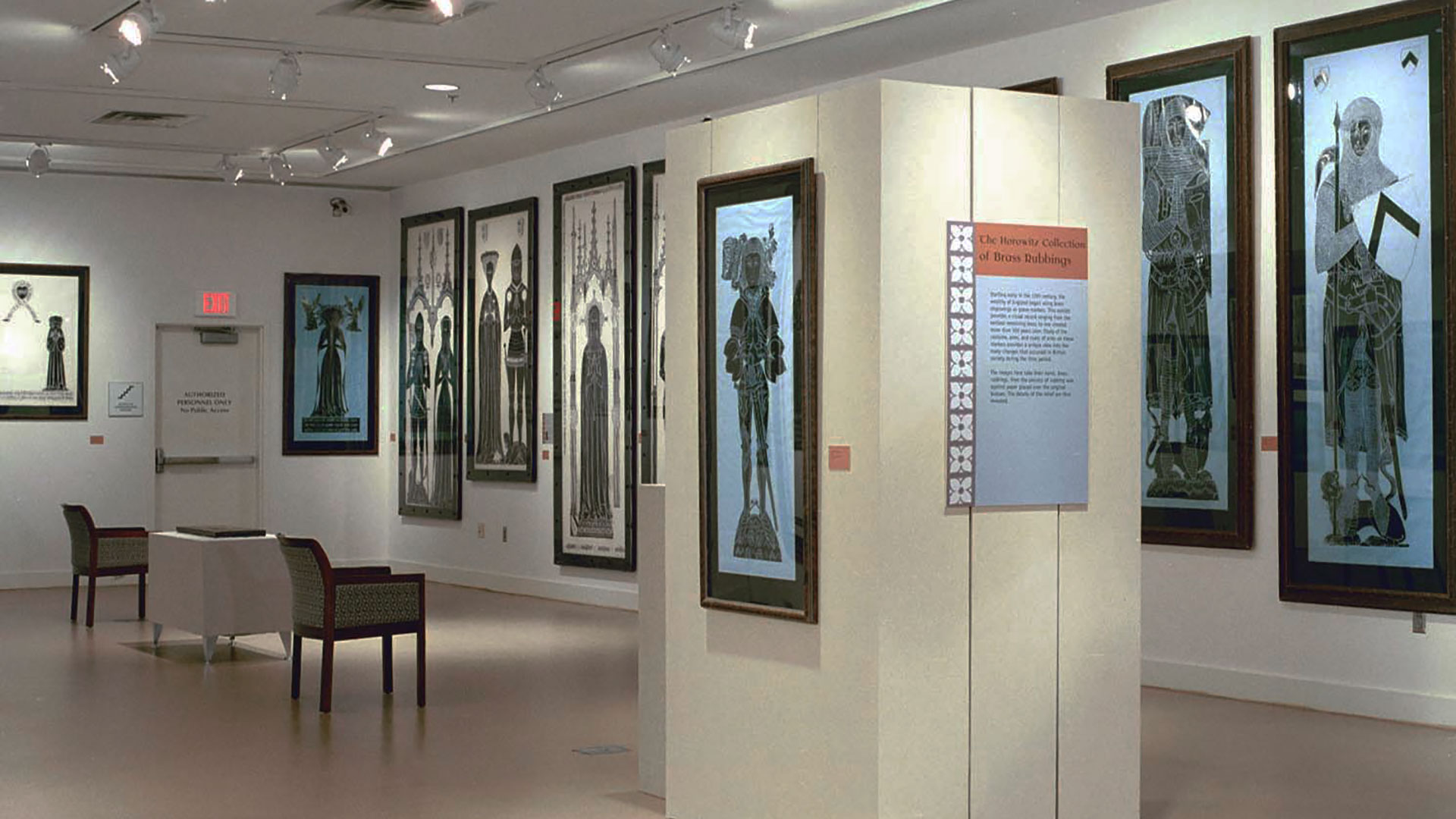
The Horowitz Collection of Memorial Brass Rubbings
- Duration:Temporary
- Location:Campbell Gallery
(date) 9/26/2002–12/20/2002
Starting early in the 13th century, the wealthy of England began using brass engravings as grave markers. This exhibit provides a visual record ranging from the earliest remaining brass to one created more than 350 years later. Study of the costume, arms, and coats of arms on these markers provides a unique view into the many changes that occurred in British society during the time period.
Brass engravings developed from earlier stone monuments in Continental Europe during the late 12th and early 13th centuries. This form of monument was soon adopted in Britain, with the earliest known brass commissioned for Simon Beauchamp in 1208. His brass and several others of the period have since disappeared. The earliest surviving brass is that of Sir John D'Aubernoun. Brass memorials declined in number with the Reformation, and by the 18th century their use had all but stopped. Most of the 200,000 brasses created in Europe are gone. Only a fraction of originals remain due to the influence of the Protestant reformation, reconstruction of churches, and looting.
People studying history and art needed to collect images of brasses. A prominent early method was pouring ink over the brass reliefs and then pressing wet paper over the panel to create an image (like an upside-down stamp). Rubbing began at the end of the 18th century as a safer alternative: wax paper was placed over the brasses, and when pressure was applied to the paper, the image of the texture below was revealed. Rubbing enabled antiquarians to obtain an image of the relief without doing too much damage.
However, excessive rubbing can damage brasses. Currently, most brasses are covered with an acrylic sheet to prevent such damage, and rubbings like the ones in this exhibit may only be done with the permission of church authorities.


